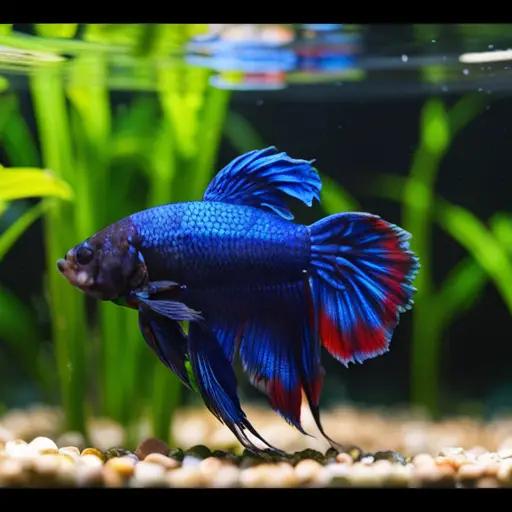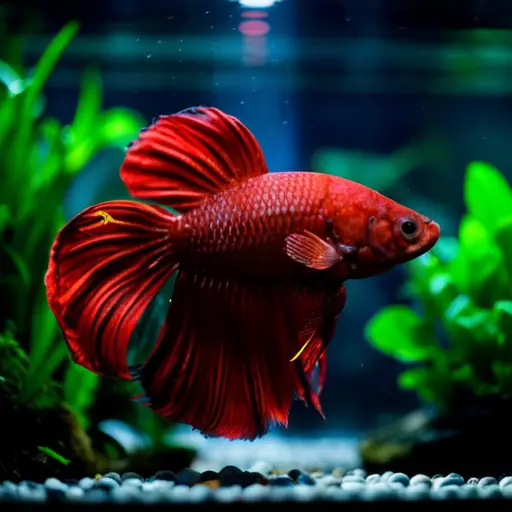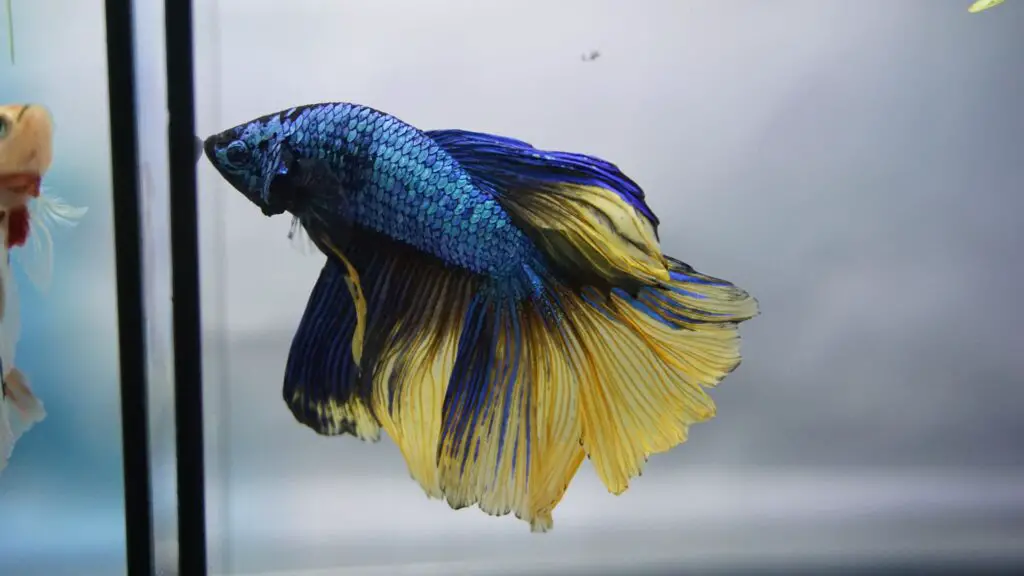Are you concerned about the health of your betta fish? Dropsy is a serious condition that can affect your beloved pet, causing extreme swelling and pineconing of scales. It is often a secondary symptom of an underlying problem, such as a viral or bacterial infection. However, dropsy can be prevented and treated with proper care and early identification.
In this article, you will learn about the causes, symptoms, and treatment options for dropsy in betta fish. You will discover how to provide your betta fish with the best possible care, including suitable tank size, water parameters, and diet, to prevent dropsy from occurring.
You will also explore the various treatment options available, including antibiotics and water changes, to increase the chances of survival for your betta fish.
By the end of this article, you will have the knowledge and tools to care for your betta fish and keep them healthy and happy for years to come.
Key Takeaways
- Dropsy is a secondary symptom of another internal problem in betta fish and is usually caused by a virus, bacterial infection, or parasite.
- Symptoms of dropsy include extreme body swelling/bloat in the stomach and pineconing of scales, lack of appetite, lethargy, bottom-dwelling, darting to the surface for oxygen, and laying on their side.
- Treatment for dropsy includes performing a 25% water change, preparing a quarantine or hospital tank, adding a heater, keeping the water level lower than normal, adding an air stone, and administering antibiotics like Kanamycin Sulfate or Maracyn II.
- Proper care, including a 5-gallon tank with a heater and filter, reducing and preventing stressors, and monitoring water parameters, can prevent dropsy in betta fish.

What is Dropsy?
You may already know that dropsy is a common ailment in betta fish, which occurs as a secondary symptom of another internal problem, such as a virus, bacterial infection, or parasite. This condition can cause extreme swelling in the stomach area, pineconing of scales, and other symptoms such as lethargy, lack of appetite, and bottom-dwelling.
Dropsy is often linked to kidney failure, poor diet, bad osmoregulation, or other internal infections. Several options are available to treat dropsy in betta fish, including Epsom salt baths and Bettafix. However, it’s essential to identify the condition early for a successful outcome.
Also, it’s worth noting that betta fish breeding and genetics is a separate topics of discussion. Proper care, including monitoring water parameters and reducing stressors, can help prevent dropsy in betta fish.
Causes and Symptoms
If you notice your betta fish exhibiting extreme body swelling/bloat in the stomach and pineconing of scales, lack of appetite, lethargy, bottom-dwelling, darting to the surface for oxygen, and laying on their side, it could be an indicator of a secondary symptom in betta fish. Usually caused by a virus, bacterial infection, or parasite, dropsy is a serious condition that can be linked to kidney failure, poor diet, bad osmoregulation, or other internal infections.
It’s important to take action immediately and seek treatment to increase your betta fish’s chances of successful recovery. As with any living organism, the immune system of betta fish can also be compromised by factors such as high bio-loads from too many tank mates, poor diet, and harmful bacteria.
Betta fish diseases can manifest rapidly in small ecosystems, so it’s important to monitor water parameters and take preventive measures to keep your betta fish healthy. Proper care, including providing a 5-gallon tank with a heater and filter, reducing and preventing stressors, and avoiding live food and proteins not recommended for betta fish consumption, can help strengthen the immune system of your betta fish and prevent future health issues.

Prevention and Care
To prevent health issues in your betta, it’s important to provide proper care. This includes maintaining water parameters, providing a suitable tank size with a heater and filter, and avoiding harmful live food and proteins. Here are some tips to ensure your betta stays healthy and happy:
- Proper nutrition is key. Give your betta a balanced diet of high-quality pellets and occasional treats of freeze-dried or frozen foods. Avoid live foods and proteins that can cause digestive issues and kidney failure.
- Tank mates and the environment should be carefully chosen. Betta fish are solitary creatures and prefer to be alone. Overcrowding can lead to stress and harmful infections. A 5-gallon tank with a heater and filter is ideal.
- Be prepared for the worst by having quarantine procedures in place. If your betta becomes sick, a hospital tank with a heater, filter, and proper medication may be necessary.
- Medication alternatives and natural remedies can be effective in treating some ailments. Research and consult with a veterinarian or betta expert before administering any treatment.
Knowing proper care procedures can make a difference in saving your betta’s life in an emergency. Keep a betta first aid kit on hand and monitor your betta’s behavior regularly. You can prevent dropsy and other health issues with proper care and attention and enjoy a long and happy life with your betta fish.
Treatment Options
Identifying the underlying issue and administering appropriate medication is crucial in successfully treating internal infections in betta fish, including dropsy.
When dropsy is detected, the first step is to prepare a quarantine or hospital tank and perform a 25% water change. Adding a heater to the tank is important to maintain a stable temperature, and keeping the water level lower than normal can help reduce the stress on the fish.
Antibiotics like Kanamycin Sulfate or Maracyn II are commonly used to treat dropsy. Still, they can have side effects such as depleting dissolved oxygen levels and placing additional stress on the fish’s kidneys and liver.
Daily 25% water changes and using an air bubbler are crucial during treatment. In some cases, euthanasia may be necessary to stop the fish’s suffering. It’s important to remember that dropsy has a low survival rate, so it’s essential to provide proper care for betta fish to prevent the development of this condition.

Conclusion
Congratulations! You now know everything you need to know about dropsy in betta fish. Remember, dropsy is a serious and potentially fatal condition but can be prevented with proper care and treatment.
If you suspect your betta is experiencing dropsy, take action immediately. The earlier you catch the symptoms and start treatment, the better your fish’s chance of survival.
To prevent dropsy, ensure your betta has a suitable tank size, clean water, and a healthy diet. Regular water changes and monitoring water parameters can also help prevent infections that can lead to dropsy.
Always look for any changes in your fish’s behavior or appearance. You can help ensure your betta stays healthy and happy for years with proper care and attention.
